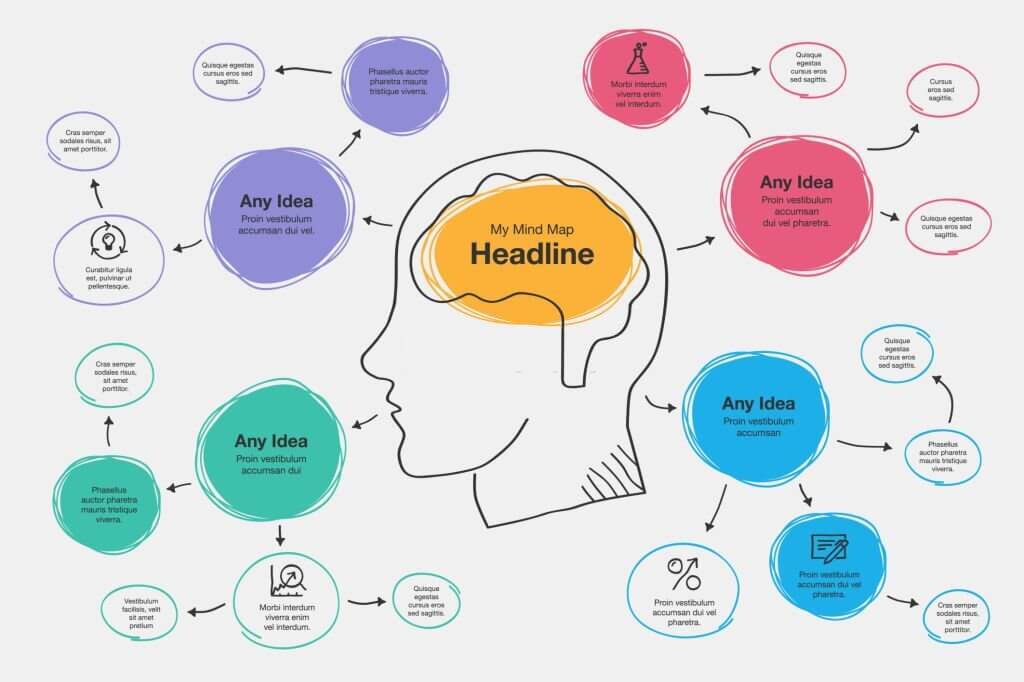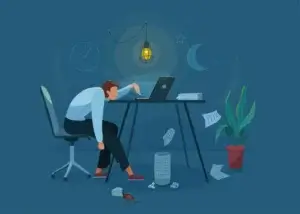Productive notes are a bit different than normal notes as they focus on keeping it simple but efficient at the same time. They are a good way to keep track of your work, lectures, ideas, and thoughts, helping you to be more effective with your notes. They are especially useful for students.
Key Takeaways
| Tips | Popularity (%) | Efficiency (%) |
| Use bullet points and symbols | 19 | 29 (29.45) |
| Highlight important points by boxing them | 39 | 29 (28.79) |
| Write amusing and unique examples | 25 | 26 |
| Don’t write down the whole sentence | 11 | 15 |
| Create a mind map of the notes | 6 | 1 |
The benefits of note taking are endless, specially right before exams. Your notes can be in the form of a physical notebook or on your computer, as long as they are following some general principles of productive note-taking.
Here are 12 tips on how to make productive notes.
1. Divide an A4 sheet into four parts

Divide an A4 sheet into four parts and then take notes on those pieces of paper. They are a form of personalized “Note Cards”. This technique of taking notes is really helpful as it makes the notes very portable, they can be carried in pockets, making them accessible everywhere.
Writing down is a crucial step in note-taking as it forces you to pay attention and it has been proven to help in recalling the information as you have involved some amount of effort in the task. Lastly this technique saves paper as there is no margin, you can use all the blank space.
This tip forces you to take notes on paper as it loses all the perks for digital note-taking.
2. Use bullet points and symbols

Bullets and symbols are an important part of note taking. They help in organizing our thoughts, concepts in a logical way. It makes the note-taking process simpler and faster i.e., productive when compared to jotting down entire paragraphs.
Bullet points:
– Bullet points are a series of short, related sentences that express one main idea.
– They are used to emphasize key points and make them easy to scan.
– The text in bullet points should be concise and relevant information that is easy to read.
– They are useful in listing the steps for a process.
Symbols:
– Symbols are used to highlight a word or phrase in a sentence.
– They can also be used to indicate an abbreviation, a technical term, or an acronym.
– You can create your own symbols with their own meanings (e.g. * Can indicate a very important point).
3. Note down repetitive information

If an information is being repeated several times during the lecture, it indicates the importance of the point whether the lecturer does or doesn’t specifies it explicitly.
Note it down under the heading of relevance or repetitive and go through it occasionally as there’s a high chance that it is the core of the entire concept or at the very least related to a lot of neighboring topics.
4. Highlight important points by boxing them

The most effective note taking technique is to highlight the important points by boxing them. This note taking technique is based on the idea that you can re-read your notes more easily and it makes your notes look more aesthetic in a short amount of time.
Box the important points using a highlighter of your choice. This tip allows you to go through your notes more quickly because you can skip over unimportant details and focus on what is most important.
5. Use a separate color for exam related topics

If during the lesson it is hinted that the topic at hand is highly relevant in an upcoming exam, jot it down immediately and highlight it using a specific color (you can choose any color) which denotes “exam related information“.
This is a really important and a life-saver tip as even if you remember the topic, you may not recall it’s context or importance which this tip takes care of. Make sure to stick to one color code for this category which will help you go through all the exam related topics from your entire notes in under minutes.
6. Avoid overusing highlighters

Highlighters are a great tool for highlighting important points in text. However, they should be used for “highlighting“ and not for painting purposes. If used too often they lose importance.
If you use highlighters excessively, it will become difficult to read the notes and the words highlighted will start to blend together. The more highlighters you use, the more ink is on the page and the more difficult it becomes to make out what was originally written.
Especially for those who already can’t make out what they have written without any highlighters involved. Their overuse also makes your notes look unaesthetic, which is not the goal here.
7. Write amusing and unique examples

The first time I saw a group of people taking notes at a conference, I thought they were taking notes on what the speaker was saying. But when I paid closer attention, I realized they were taking notes on each other.
The people in the front row were taking notes on what the person next to them was writing. The people in the back row were taking notes on what the person in front of them was writing. It turned out that everyone in the room was just writing down what their neighbor wrote down and no one listened to anything that was said.
The above was a sample of an amusing or unique example (of mistakes during note-taking) to drive the point home. This technique of writing your own examples makes you remember a topic more efficiently by forcing you to focus and apply what you already know to come up with an example.
It also grabs your attention if the text is weird, the less it makes sense the more impactful the example will be, as our brain tends to keep those information around which it can’t fully comprehend or make sense of.
Hence it is one of the most productive note taking tips.
8. Stick to one color per chapter for aesthetics

Some note takers use multiple colors, highlighters for their notes which is fine when done in a controlled fashion. You should stick to one color while still using different shades of the same color for a given chapter as it makes your notes look more aesthetic.
The most important thing about notes is that they should be easy to read. If they don’t look good you will probably have a hard time figuring out what was written or you may even lose interest altogether. Aesthetic notes are more pleasing to the eyes and motivates the reader to study.
9. Use a correction tape

If you make a lot of mistakes while taking notes then correction tape is a very useful tool. It can be used to cover your miswrites as it allows you to write over it with the correct information.
You are bound to make some mistakes while taking notes as you have to keep up with the pace of the lecturer, absorb the information, decide whether it’s important and then note it down. You should not worry about how your notes are looking while writing as you can work on it later.
Once the writing part of your notes is completed, check for errors and fix them using a correction tape. This is also a good time to go through your notes and highlight the important points, which you might have missed before.
10. Don’t write down the whole sentence

While jotting down points you may get tempted to note down everything, hold yourself in such scenarios as it defeats the purpose of notes itself.
You are creating notes in the first place with the intention of having less but relevant and important material, which will allow you to go through a topic as fast as possible. But noting down everything will end up leaving no difference between your textbook and your notes.
Keep your notes concise and to the point, if you’re unsure of how to cut down unnecessary information use the bullet points structure.
11. Find the use of the topic for effectiveness

In order for your notes to be productive i.e., they require less time to form and are extremely effective and useful, it is important for you to drill down a thought in your head.
Find the use, you need to find out why you need to remember or store a particular topic in your head. We humans are different from computers, we don’t store everything in our brain with the same level of priority. You don’t have to put a lot of effort in trying to remember your name, because your brain knows it’s “use“ and relevance (in this case, high priority).
To drill a topic into memory you must understand the use of the information and also have exposure to it from time to time, just like how we can’t always remember the names of the new people we meet, as we aren’t exposed to their names enough time by then.
But as you start to meet that person more, your brain is signaled through constant exposure about the relevance of their name and how it now has a “use“ or reason for remembering it.
12. Create a mind map of the notes

Now you don’t have to take a pen and start drawing flow charts of your notes, when we say mind map, we mean something different.
Follow these 3 steps to create a mind map for every chapter.
- Just look at the notes and focus on how they look (visualize the structure).
- Keep track or have a rough estimate of how many sub-points and bullet points are there per heading.
- Remember all this information and repeat it out loud before revising the notes one final time.
What this does is it creates a structure of the notes in your mind, whenever you are having a tough time recalling any information, you can go through this mind map in your head, just how when we need to find a topic in our book we look for the index or contents page.
This technique which costs just 2 minutes of your time will provide you the surety and confidence that you will be able to recall everything that you’ve learned.
Wrapping Up!
We have covered the basic tips/techniques to make your notes productive, but there is a lot more you can do if you dive deep down.

There are several ways of note-taking but notion packing everything in one place is considered to be one of the best players in the game of productive note taking. We have talked a bit about it in our post, Best Productivity Apps for Students.










Leave a Reply